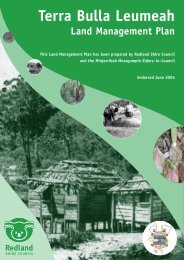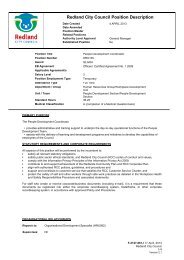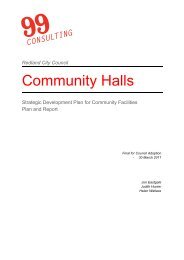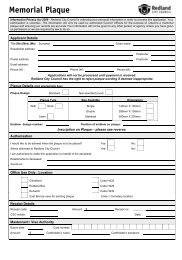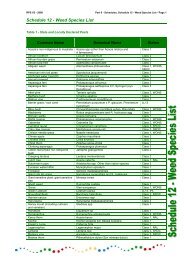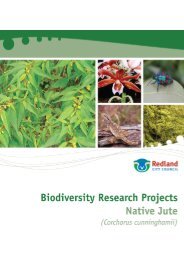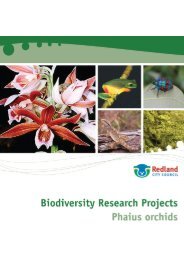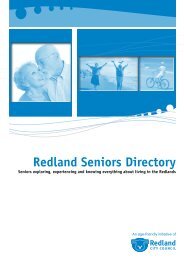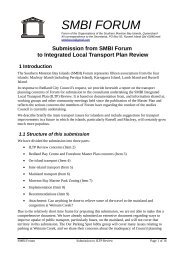Land for Wildlife Newsletter - IndigiScapes
Land for Wildlife Newsletter - IndigiScapes
Land for Wildlife Newsletter - IndigiScapes
Create successful ePaper yourself
Turn your PDF publications into a flip-book with our unique Google optimized e-Paper software.
Sandstone Boronia (Boronia glabra) is mostly found in scattered<br />
populations on sandstones of Central Queensland, Burnett district and<br />
the Darling Downs.<br />
Boronia grimshawii in flower with both white and pink<br />
flowers on one plant. The small white egg on the top<br />
petal of the flower shown on the right is the egg of<br />
the Satin Opal (Nesolycaena albosericea) butterfly. The<br />
Satin Opal is one of four species of butterfly, all in the<br />
genus Nesolycaena, that rely solely on Boronias <strong>for</strong><br />
their existence.<br />
Border Boronia (Boronia repanda) is found just north of Stanthorpe and is<br />
listed as Endangered under both NSW and Commonwealth legislation.<br />
Forest Boronia (Boronia rosmarinifolia) can be found in heathland across SEQ.<br />
This photo was taken from a site at Moggill that was needlessly destroyed <strong>for</strong> a<br />
housing development, with non-local native species planted in their place.<br />
The Satin Opal adult butterfly lays its eggs on the<br />
flowers of Boronias. When the larvae emerge they<br />
feed almost entirely on the Boronia flowers. While this<br />
butterfly species is not currently listed as a threatened<br />
species its total reliance on a few Boronia species as<br />
host food plants <strong>for</strong> its larvae make it uncommon and<br />
difficult to locate and see.<br />
Photographs of the Satin Opal generously provided<br />
by Geoff Walker. Visit Geoff’s website with impressive<br />
images of nearly every species of Australian butterfly at<br />
www.australianbutterfliesphotographed.com<br />
Wide Bay Boronia (Boronia rivularis) is found on sandy soils and heathland<br />
in northern coastal regions of SEQ.<br />
<strong>Land</strong> <strong>for</strong> <strong>Wildlife</strong> South East Queensland January 2013 5



